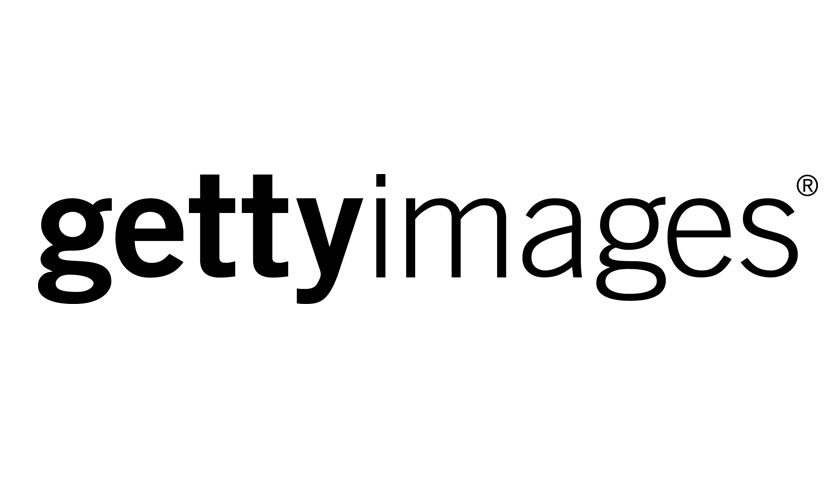Our latest Marketing in the time of COVID-19 series is an interview with Jacqueline Bourke, Head of EMEA, Creative Insights at iStock by Getty Images. Founded in 2000, iStock created the crowd-sourced stock industry and became the original source for user-generated stock photos, vectors and illustrations, and video clips.

For more than 15 years, they’ve given theirartists a platform to make money with their passions by licensing their stock content to businesses and individuals around the world for use in a wide variety of projects.
iStock remain an industry leader and key destination for creative business professionals who want to make a big impact without breaking the bank. They believe that imagery has the power to move the world.
Can you tell me a bit about yourselves, your business and what you do day to day?
iStock by Getty Images is a global source of visual content, offering small to mid-sized businesses, and individuals, affordable access to millions of premium-quality images, videos, and illustrations. As Head of EMEA Creative Insights, my expertise is to understand and guide our customers on which visuals most powerfully connect with brand audiences in a changing world. This involves analysing what our customers are downloading and searching for on a daily basis to understand what’s driving their visual communications forward. Also identifying the key forces influencing consumer behaviour and analysing the socio, cultural and economic trends that show us what consumers care about and what visuals they respond to. These insights are then used by our art directors and curators globally to brief our, over 320,000 contributing photographers, to ensure they are producing visual content which will resonate with businesses, and make their message stand out to consumers.
Do you think that Covid-19 has changed how companies and businesses create their visual strategies?
In the immediacy of Covid-19, companies and businesses have paused in their visual strategies and are listening more closely to what their audiences care about. When we look at what visuals have been searched for and downloaded since the global pandemic spread around the world, there is an accelerated willingness by brands to show that they are proactively listening and that they are here to reassure and support their customers in unprecedented times. What is interesting to note, is that the topics that consumers cared about before Covid-19 hit, such as sustainable living and wanting brands to celebrate diversity of all kinds, have become even more important and accelerated. For example, according to a recent survey we undertook, almost 8 in 10 people globally expect that companies and brands be consistently committed to inclusivity and diversity in their advertising. Yet, whilst the topics which consumers resonate to visually hasn’t changed, the type of visuals has. Businesses need to be even more conscious of the lived realities their customers are facing – for example, choosing visuals of mass gatherings or close celebrations won’t resonate in the current times of social distancing. Whereas focusing on the simple moments of comfort and togetherness, such as enjoying a zoom call with loved ones or struggling to self-care in disrupted and chaotic lives, more authentically reflects current day-to-day life and what consumers care about. Softer and light-filled visuals of every-day scenarios at home emerged swiftly as a comforting reaction to the crisis. Bottom line, companies and businesses need to pivot more quickly in their visual strategies to redefine what success looks like and what matters to consumers today.
A lot of ethical businesses read us for hints on their marketing, can you share with you insights into how they can use visuals to effectively engage their target audience?
When it comes to selecting visuals that influence purchasing decisions, it is vital to clearly understand your customers and what forces are driving what they care about and therefore their buying choices. That will enable you to choose visuals which resonate best. We recently launched Visual GPS, a dynamic platform that allows you to customise our visual insights to your target audience. Our survey of 10,000+ consumers and professionals in 26 countries around the world found that there are four key forces in 2020 that are driving purchasing decisions: sustainability, technology, realness and wellness.
Increasingly, people are re-connecting with nature and placing a greater focus on choosing more sustainable lives – recycling more, gardening with purpose, or avoiding single use plastic. Bringing this theme into the visuals you use as a business is important as consumers will be more likely to engage if you are demonstrating sustainable practices. 81% surveyed consider themselves to be eco-friendly and 50% stated that they only buy products from brands that make an effort to be eco-friendly.
When it comes to technology, 79% said technology makes them feel connected to those who matter most, so bringing people to the fore and showing the positive impact of technology and the relationship people choose to embrace and have with each other through technology is key.
Wellness is more important now than ever. Consumers place near equal importance on their physical, emotional and mental health, as well as the wellbeing of their loved ones. Brands are being prompted to think more holistically about wellness. It is not simply about visualising the physical element anymore, but looking at re-defining what success looks like, appreciating the smaller moments in life and what brings people joy in their everyday.
Finally, realness – It’s important also to think about how you are presenting your business in the visuals you use. We know customers want to see greater transparency, almost three-quarters want to know how their products are produced, so including visuals which demonstrate your working practices are likely to resonate well. It doesn’t need to be complex, even something simple like an illustration, which shows how you create your product or source your material, can be very effective.
On a more practical note, ensuring you mix up your visuals by using varied content, be it images, illustrations, vectors or videos, will keep your content diverse and engaging.
Do you have a favourite ethical marketing campaign? What ethical marketing campaign are you proud of?
Patagonia’s ‘Don’t Buy This Jacket’ campaign from a great many years ago was an eye-opening and surprising campaign. It went against the traditional form of advertising, listing the reasons why people shouldn’t buy more of their products and focused on a message of meaningful consumption. Not only did it highlight the issue of sustainability, but the brand demonstrated a very real long-term commitment. It wasn’t a one-off stunt. For example, they followed up with their ongoing ‘Worn Wear’ programme, encouraging customers to repair their clothes rather than purchasing new items and share the meaningful stories of how their clothes were torn. Patagonia significantly demonstrated the power of ethical marketing and made you sit up, listen and think as a consumer. Increasingly, consumers seek out brands which fall in line with their values and boycott those who don’t. According to our recent Visual GPS report, 34% stated they started purchasing from a brand that supported a cause they believe in, while 33% boycotted a brand that did not.
We are a very proud of our #ShowUs campaign in partnership with Dove and GirlGaze, that iStock’s parent company, Getty Images, launched last year – it’s the world’s largest stock photo library created by women and non-binary individuals to shatter beauty stereotypes and show women as they are, not as others believe they should be. We were conscious that more needs to be done when it comes to authentic visual representation of women. The ambition of the project has been to drive a more diverse and inclusive visual landscape through media and advertising, and we are pleased to say we have seen very positive progress. The collection has doubled since launch to include over 10,000 images available for the media and advertising industries to license. Images from the Project #ShowUs image library have so far been licensed over 28,000 times by over 2,500 companies in over 60 countries.
What are you most looking forward to doing when everything is back to normal?
That’s an interesting question! Will there ever be a full back to ‘normal’ return?! The new normal already seems to be very normal sometimes! What am I missing right now? I am really looking forward to getting back out on the road across EMEA and meeting our customers and contributors face to face. Thankfully, due to the wonders of modern technology, we are in constant contact virtually and I am wonderfully encouraged by the richness of those conversations that have not been impeded by a lack of face to face. Yet the ease that we took for granted before of having those meetings in ‘real life’ seems magical at this point! What is also interesting is understanding future states and transformations for businesses as we move forward.
This pandemic has seen the importance to many of local businesses, how do you think this may have changed the landscape of business?
This year we celebrated our 25th anniversary and in those 25 years as a business, we have understood the impacts of global crises (such as 9/11, the financial crash and now Covid-19) on visual communication. In the aftermath of the 2008 financial crash, for example, we saw the rise of the ‘everyday hero’ in visual storytelling as consumers looked for stories of stability, trust and authenticity in the economic downturn. There was a huge growth in images of small business owners as brands and banks, such as Halifax, began featuring ordinary people in their campaigns, making them more relatable. We are now witnessing the return of the ‘local hero’ and over the last few months image searches for ‘local business’ have increased by 345%. This is due in huge part to the demand for visuals around key workers that went up significantly. During the pandemic, front-line workers and local services have kept us going, and, in turn, people are demonstrating their loyalty and appreciation – searches for ‘shop local’ increased by 190%. What success looks like is being redefined and small and local businesses are coming to the fore.
Lastly what’s next for your industry, and what are you, as a company, up to next?
We’re currently focusing on refreshing our Visual GPS report, digging into the most recent consumer findings – in particular, we will be looking into the forces of realness and sustainability in more depth – and understanding exactly what impact the past few months have had on customer decision making and whether that has changed the way they engage with visuals. More to come shortly!
We really look forward to what comes next! Thanks very much to Jacqueline for giving us an insight into iStock and how it has been affected by the current pandemic, and telling us a bit more about her thoughts on ethiocal marketing. To find out more about iStock then please visit their website here.

